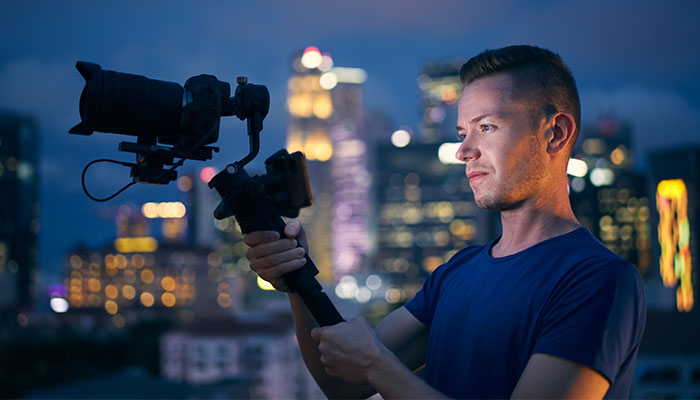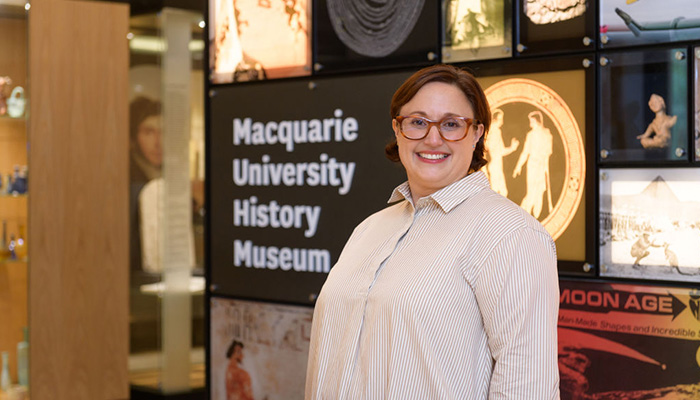If you have a passion for ancient cultures, indigenous or early colonial history in Australia, studying at Macquarie University gives you hands-on experience.
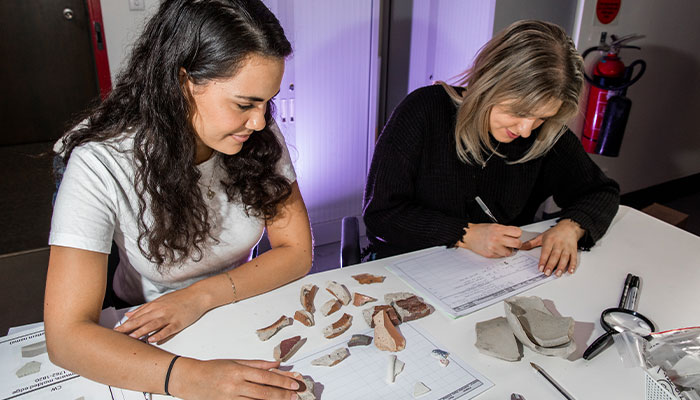
End-to-end experience: Students study items in the field lab of the Department of History and Archaeology.
You’ll discover what it’s like to dig up items in the field, clean, examine, and catalogue them, and have them displayed in a museum. Digital technology will be one of your most valuable tools.
The Department of History and Archaeology facility is part of the architectural layout of the brand new Faculty of Arts precinct that opened in 2020.
“Students get a real end-to-end archaeological experience that’s fully integrated into their teaching,” says Michael Rampe, the department’s Learning Design and Production Lead. “It’s purposeful learning. They don’t just learn skills in isolation.”
We're now using digital technology to make remarkable discoveries that weren’t possible before.
In the simulated archaeological area, students practice field work techniques. They learn how the real-world process to excavate an item out of the ground, take it to the loading dock, through a ‘quarantine area’ in an environment where they clean it in a climate-controlled ‘wet lab’ and then catalogue it. “They get the real feeling of flow of all the steps in the process,” Rampe says.
The next room is the active learning ‘dry lab’ space where they examine items using digital cameras and view the details magnified on screen. In the curatorial space, they learn about modern digital imaging, how to use 3D laser scanners to see their objects from every angle, even upside down and inside.
Living history
Students also spend time at the neighbouring Macquarie University History Museum. As part of it's many roles, it is a teaching museum where students, staff and even members of the public can see this technology in practice, with interactive exhibits using videos and technology to explain the objects’ backstories.
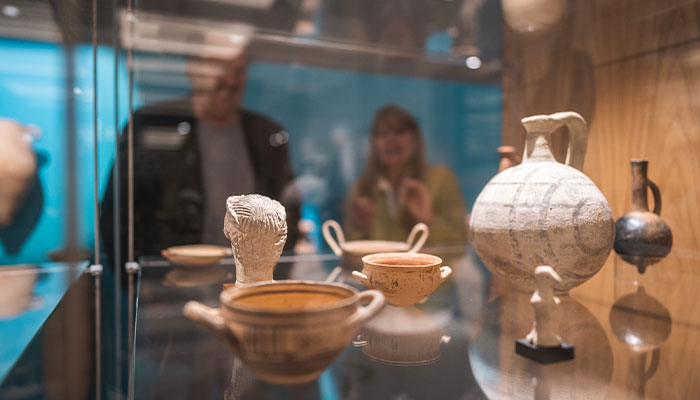
Treasure trove: Artefacts in the Macquarie University History Museum.
The museum houses more than 18,000 items from world history: Egyptian, Greek, Nubian and Roman artefacts which include the largest papyri and the largest numismatic (coins) collections in the southern hemisphere.
You’ll also find objects from Papua New Guinea and the Indus Valley (in what is today Pakistan and Afghanistan) dating back to the Bronze age, as well as items from Australia’s Indigenous, colonial and 20th century history.
Virtual reality
Before COVID-19, archaeology students would have the opportunity to experience international field work — on digs in Croatia, Greece, Egypt and Israel. Despite widespread travel remaining on hold for now, students are still able to learn through experiencing unique virtual digs.
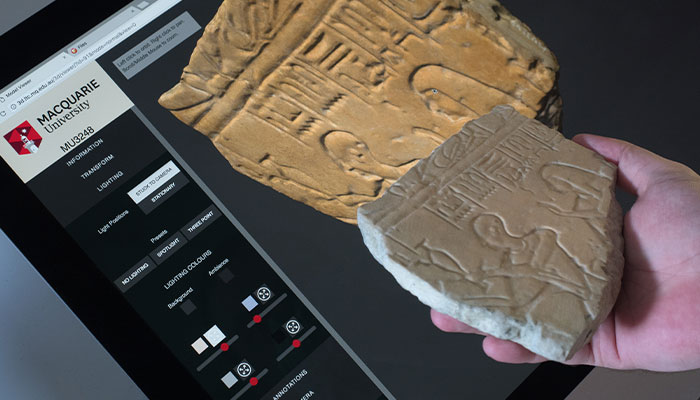
Invaluable: 3D imaging of an Egyptian artefact ... digital technology is now part of what every archaeological student needs to know, says Learning Design and Production Lead Michael Rampe.
“We've developed some quite serious virtual reality experiences,” Rampe says. “Students can put on headsets and visit real archaeological dig sites. Using drones, camera footage and software, we've scanned full sites in Israel so students can be immersed in them and even ‘pick up’ objects without leaving campus.”
If students go on to do further research at Macquarie, they might also get to use other technology such as a CT (computed tomography) scanner - an X-ray machine that rotates around an object and creates cross sectional images. Macquarie researchers have used this technology to investigate inside the wooden sarcophagus of an Egyptian mummy and determine what materials wrap the body.
“A lot of people don't realise how the profession has changed,” Rampe says. “We're now using digital technology to make remarkable discoveries that weren’t possible before. A few decades ago, using computers in a humanities course was unheard of, but now technology is invaluable and part of what every student needs to know.”


